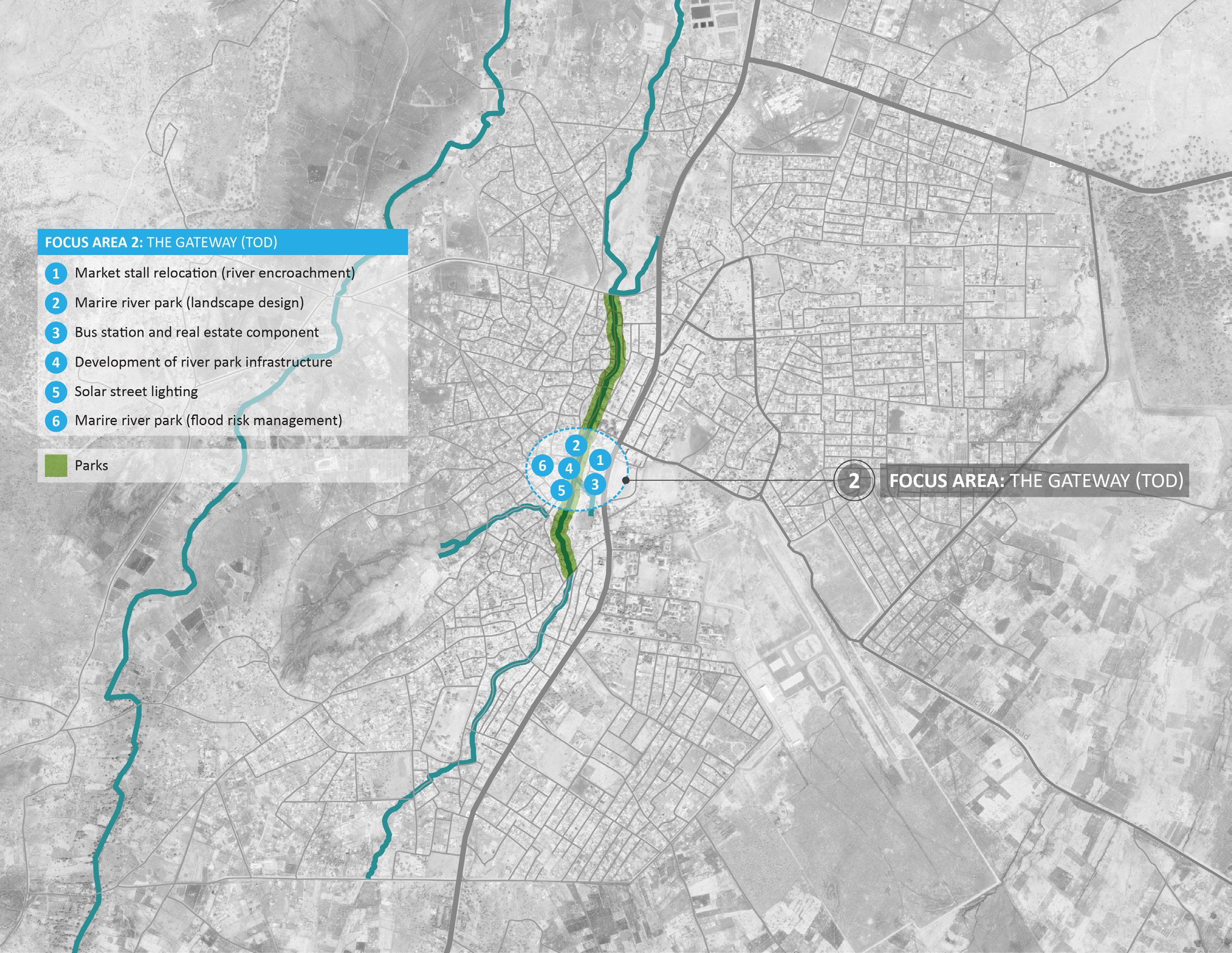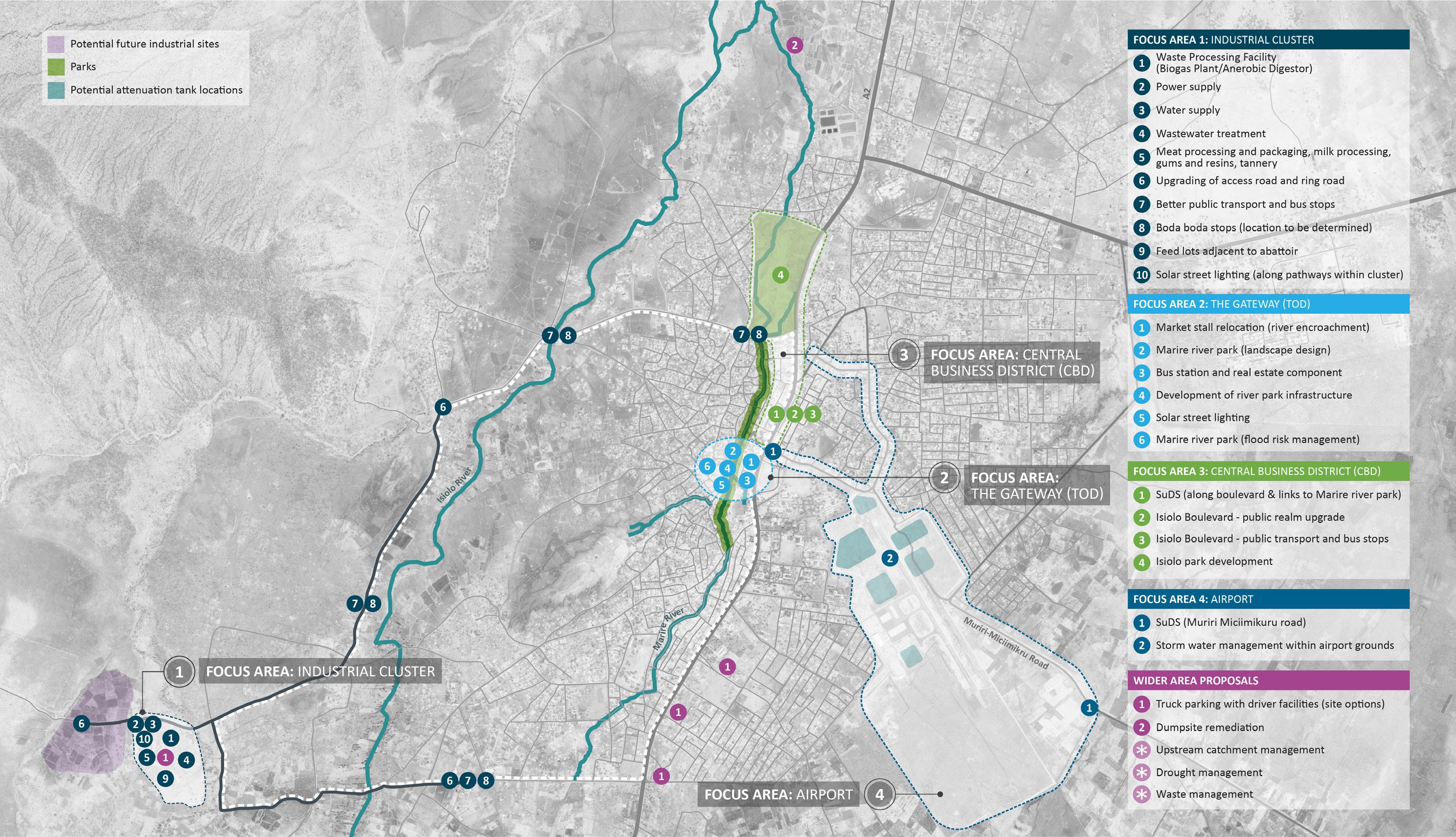
3 minute read
4.4. Next Steps
IMPLEMENTATION PLAN 122
bridge the gap (through investments and action) from the existing capacity to the required level. To support this process, Isiolo County could apply the National Adaptive Capacity (NAC) Framework58 at their county level.59 The NAC framework provides a practical approach for understanding the institutional aspects of adaptive capacity. It enables its users to systematically assess institutional strengths and weaknesses that may help or hinder adaptation. Adaptation plans can then be better designed to make the greatest use of strengths and remedy weaknesses. The NAC framework evaluates the performance of institutions against five key functions critical to adaptation: assessment, prioritization, coordination, information management, and climate risk management. The NAC treats performance of these functions as an indication of a country’s overall adaptive capacity. Table 5 provides an overview of an Adaptive Capacity Building SWOT60 analysis for Isiolo County based on literature review.
58 https://wriorg.s3.amazonaws.com/s3fs-public/pdf/ ready_or_not.pdf 59 The pilot applications of the framework in Bolivia, Ireland, and Nepal suggest that the NAC framework is useful across a range of countries and that it can be tailored to specific country contexts. 60 Strengths, Weaknesses, Opportunities and Threats with the following factors in consideration - human, socio-economic, natural, physical and financial. 61 https://www.adaconsortium.org/images/downloads/ isiolo-ICCFinventory%2017_11_2017.pdf Table 5 - Adaptive Capacity Building SWOT analysis for Isiolo County
Internal Focus
External Focus Helpful
Strengths, that build adaptive capacity: › Strong political will for addressing climate change at the national level right through to the county level; › Development of key climate change policies, strategies and plans e.g. Isiolo County Climate
Change Fund Act (2018); › Successful resource mobilisation (both internal and from donors) and implementation of climate adaptation measures (44 community adaptation investments over 2013 - 2016 captured in the Isiolo
CCCF Inventory of Adaptation Investments);61 › Through its county assembly, Isiolo enacted a law committing 1-2% from its development budget to support the implementation of priority climate change interventions on a more sustainable basis; › Increasing awareness raising of climate change impacts and opportunities; › Effective mobilisation and an all-inclusive coordination mechanism of key actors for the development and deployment of climate adaptation strategies and frameworks; › Development of simple and low-cost technologies suitable for the local context. Weaknesses, that limit adaptive capacity: › The full scale of adaptation measures required may need significant investments. The lack of timely and sufficient funding to cover operation costs. Staff salaries and equipment constitutes a major hindrance for successful implementation, coordination and monitoring of interventions. The establishment of the
Isiolo CCCF helps address this issue; › Availability of high-quality resources /
Retention of highly trained staff (i.e limited number of technical staff capable of delivering climate programmes and projects); › Limited supporting networks, including information and communications technology (ICT) systems and infrastructure e.g. in Isiolo, there is an absence of an integrated data bank on crops, livestock and livestock products, feed and water availability hence the efforts of the government and other service providers to identify and support vulnerable groups are limited; › Inadequate monitoring, evaluation, learning and reporting systems and structures.
Opportunities, to develop adaptive capacity: › Planned installations of weather forecasting equipments for extreme events and windstorms; › Integration of climate change considerations into
County Integrated Development Plans (2013-2017 and 2018-2022) and other county plans; › Improvement of Isiolo County’s climate finance resource mobilisation including from global funds such as the Green Climate Fund (GCF) and the private sector; › Strengthening the awareness of County policy and decision-makers on adaptation measures for better mainstreaming of adaptation measures in County plans; › Collaboration on strong and applicable climate change research and development. Threats, that prevent development of adaptive capacity: › Regulatory - inconsistency in policy and institutional arrangements; › Governance - change in priorities with change in governance; › County plans not containing a strong reference to climate change; › Population growth putting pressure on existing resources; › Cultural beliefs; › Inter-county resource-based conflicts; › Lack of synergy among development partners.
Hinder
Adapted from European Commission Non-paper Guidelines for Project Managers
Following the completion of the UEP, during the next phase of the SUED Programme the identified value chain and climate resilient infrastructure projects will be developed further forward by:
Capacity building specialists to help:
› enhance municipal and local capacity to implement the identified projects, and › enable revenue generation to ensure financial sustainability beyond the programme
Investment climate advisers:
› will help remove or amend policy and regulatory constraints to private sector led urban development and growth
Investment experts to help:
› develop feasibility studies and business cases for specific projects to establish their bankability, and › develop investment promotion strategies to draw in investment (including seed financing through the programme)








